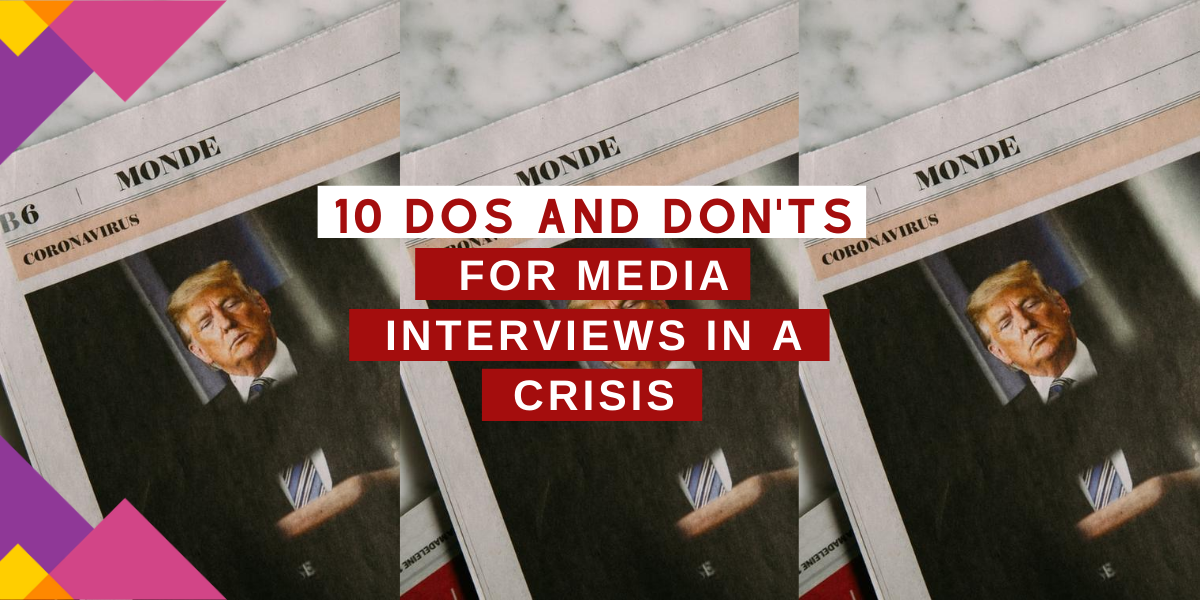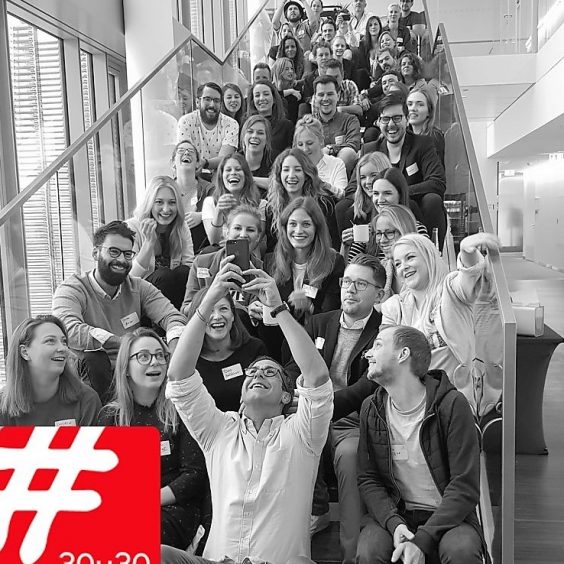The Axios interview with President Donald Trump is the talk of the town – for all the wrong reasons. Don’t succumb to the pressure in crisis media interviews. Here are London lorry Rebecca Burgess’ ten top tips…
As our Director of North America, Meredith L. Eaton, said in a recent article with PRNEWs, media interviews with CEOs and/or Presidents usually provide “a welcome opportunity to be able to address current issues, articulate policies, and shape your narrative on a public stage.” They’re a chance to set the record straight and paint a nice shiny top coat on your personal and brand reputation – which, if your company has gone through a period of turbulence, can repair some of the damage caused.
But they can also go in the other direction, often just by uttering a couple of misplaced words. Without preparation, media interviews during a time of crisis can add more fuel to the fire – tarnishing your personal and brand reputation. Up against greater scrutiny in times of public uncertainty, CEOs, Presidents and any spokesperson for that matter, can’t afford to let the precious minutes spent with a reporter go pear-shaped. Not only is it a huge waste of time for both the spokesperson and the reporter, it has a lasting effect.
It might not be surprising to some of you that I’m writing this within a week of the Axios interview with Donald Trump. For those who haven’t kept up with the debacle, the President was questioned by Axios reporter Jonathan Swan and it was quite frankly, a complete disaster – to put it politely. While Jonathan remained composed and professional – acting as the voice of many who have felt misled, upset and confused by Trump’s recent actions, or lack thereof – Trump crumbled.
I watched the full interview on HBO’s YouTube channel, which has now unfortunately been taken down in the UK. But this video captures all the highlights:
This isn’t about his politics. Sitting there, reminding myself every minute or so that this wasn’t a spoof, it was a stark reminder of how detrimental an organisation’s crisis communications efforts can be without the necessary preparation. More so now with economic challenges and customer loyalty hanging by a fragile thread, it’s essential to deal with a crisis in the right way. Sometimes this involves an interview, other times it doesn’t. But when it does, learn from Trump’s mistakes with these ten lessons:
- Don’t put stats to something that’s unmeasurable
When flustering his way through pieces of paper like a technophobe at a printer or someone who’s looking at IKEA furniture instructions for the first time, Trump points to Coronavirus data graphs saying that “we’re lower than [pause] the world” in “numerous categories.”
Firstly, if you’re going to make a bold claim about your successes, come armed with the details. Glossing over the exact stats will only add to people’s scepticism and even worse, make them jump to the conclusion that you’re lying – even if you’re not. And secondly, if you have some impressive stats up your sleeve, ensure that they’re measurable. Saying “the world” or “everyone else” won’t cut it. Who are you talking about exactly? Be specific. And if you don’t have the finer details, don’t say anything at all.
2. Don’t use cliche sayings
“It is what it is” might be your default reaction to coping with a situation that you can’t do much about now, like not getting the job you’ve had your eyes on or burning your dinner. But these default reactions can so easily creep in at the worst of times, giving off the wrong impression. In Trump’s case, it made him appear insensitive when saying this in the context of Coronavirus deaths. So, drop the cliche, blase sayings and opt for composed and coherent reactions that show action and empathy.
3. Don’t show up the reporter
The reporter isn’t a single person. Yes, there’s one seat opposite you occupied. But they represent their readers. For filmed interviews like the Axios interview, their readers will tune in, knowing that the reporter is their voice. This is why it’s essential to not make them look silly or call them out on their mistakes, as those watching will also feel the burn. Trump impulsively says “you don’t know that” frequently throughout the interview. While they might not know the complete story, use this time to educate the reporter, readers and viewers with patience to clarify any false claims.
4. Do answer the damn question
Trump twists his responses to what he wishes the reporter asked, not the question they actually asked. This is an outdated trick that needs to call it a night. It’s incredibly obvious when it happens, so much so that you might as well say “I don’t know; I don’t like your question”. Depending on the severity of the crisis, don’t be afraid to address the negative. You can follow it up with the positive after – what you’re doing to combat it and how the future is looking. After all, it can be admirable to not shy away from the difficult questions, helping to build brand trust.
And in cases where you really can’t answer the question you’ve been asked, be careful when bridging. This is when you bring the focus of the question back to your messaging. It shouldn’t be your default reaction to every question. Subtlety is key.
5. Do show modesty
Ah, modesty. Something Trump lacks. Something you shouldn’t.
Yes – you’re the best. We know it. This doesn’t mean you have to say it. Avoid saying things like “we’re the best” because it’ll be met with eyerolls. Let them make that judgement.
6. Do elaborate, within reason
A personal favourite moment in the Axios interview is when Swan asks Trump “ who said that?” after Trump said “a lot of people” say it’s possible to test too much for Coronavirus. Trump then responds with, “just read the manuals, read the books”, only to prompt confusion in Swan: “What manuals? What books?”.
Unsurprisingly, Trump can’t say what these manuals or books are. If they do exist – and I do question it – he should’ve elaborated on what they are, what they say and why they’re important material. Give people the action to go learn more! If you can’t, they’ll question your integrity.
7. Don’t divert blame to others
When something doesn’t reach your desk, don’t give it an audience. In media interviews, diverting blame to someone else for not relaying a piece of information is not only a crap way of dealing with a situation, but also shows flaws in your internal system within the public arena. Don’t give them more ammo to bring you down.
8. Do maintain a balanced composure
We all have things we deem to be more important than other things. For example, get me talking about how Hamilton is the greatest piece of 21st century art and my enthusiasm skyrockets. But if I was being interviewed to address a crisis, I must treat every conversation topic with equal enthusiasm, concern and empathy.
Surprise, surprise: Trump doesn’t do this. The imbalance of tone when talking about Black Lives Matter compared to Ghislaine Maxwell is extremely unnerving. Both are very serious issues. Yet, Trump responds with understanding to one and not the other. It is vital that in media interviews where crisis is at the core that you maintain a balanced composure. People will read between the lines.
9. Do show action
What are you going to do about it though? Achievements can be impressive. But no one wants to hear you list your recent successes, particularly in a time of crisis where the situation has suggested otherwise. A pat on the back is not your intention for this interview. Your intention is to lay out the next steps which reassure people.
10. Do keep your personal hunches to yourself
The interview is with you; we know that. But while you’re the one under the spotlight, there’s a bigger brand and body of people you’re representing. We’re all for adding in some personality. But when that crosses over to disclose the personal relationships you have with colleagues and people in the industry, we don’t need to know. Bad blood creates gossip. Become the talk of the town, for the right reasons.
Do you need help developing a crisis communications plan? Do your spokespeople need media training to position your organisation in the best possible light? Get in touch at hello@rlyl.com to find out how we can support you.




